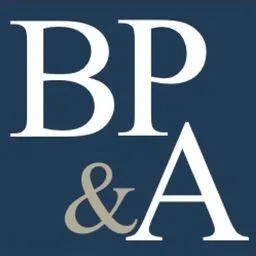
Five top traits for a Certified Scrum Product Owner
The Product Owner (PO) role is a key person to help ensure that the product created by the Scrum team is the right product for the customer, whether that customer is from an external agency or is another employee or work group within the same agency. The customer can be other employees within the same company who would benefit from the product being developed or external people who have a problem solved by the product being developed. The “right product ” is defined as that product that successfully and efficiently solves the particular problem being addressed and is considered “fit for purpose.”
The PO role is critical to achieving optimum performance from any Scrum team, yet too many companies have the wrong people in place as product owners. The five key traits of every successful product owner are time, knowledge, authority, accountability, and stakeholder management.
1. Time
Does the product owner spend sufficient time with the Scrum team? Is the product owner spending time refining the product backlog? Does the product owner actively engage with the Scrum team daily? There should be a lot of touchpoints between the product owner and the development team throughout the Sprint. It is not good enough for the product owner to just be present for the Sprint Planning meeting and then disappear for two weeks only to return during the Sprint Review. Lack of proper engagement by the product owner will create additional bottlenecks and delays in delivering the product.
2. Knowledge
Does the product owner know about the features and benefits of the product? Does the product owner genuinely understand the customer and the customer’s problem from the customer’s perspective? Does the product owner have a vision for the product? Can the product owner clearly articulate the strategy to the development team which is more tactical than strategic? Does the product owner understand the technology being used to implement the product? When your PO has too little knowledge about the customer’s needs, what they value in a product, or which features to lead with, they become the bottleneck delaying the delivery of the product to the market.
3. Authority
In Scrum, the product owner owns the product backlog. Therefore the product owner truly owns the scope and schedule. The PO provides the “What” (we’re building) and “Why” (we’re building it) to the rest of the Scrum team. In Scrum, we like to say that the PO role is the business value maximizer — given a group of talented developers, the PO keeps the development team working on the most important things that create the most value using the right ordered sequence of work. And yet, in many companies, the product owner role does not truly have this authority. They are a “proxy” to another executive who sits outside the Scrum team and who determines the scope and deadlines. The lack of a Product Owner's authority can create additional bottlenecks and delays in delivering the product.
4. Accountability
The product owner's role is often considered the “single wringable neck” or the “single throat to choke” when things go wrong. First, this type of violent language is abhorrent and should be avoided at all costs because it impacts the culture of psychological safety we are trying to build. We need to leverage things like respectful and non-violent communication. (We highly recommend our students learn about NVC – Non-Violent Communication). A much better way of expressing this is to simply say the product owner is accountable. A single person (not a committee) is responsible for ensuring they get it right and direct the team in the correct ways. If the product owner has the team build the wrong thing, it’s on the product owner. The product owner should constantly be engaging end users and stakeholders to ensure the team is kept building the right thing. Hence, we emphasize the importance of the Sprint Reviews to keep everyone in sync.
5. Stakeholder Management
The successful product owner is constantly managing stakeholder expectations. This is not done solely through emails. This is done through actual one-on-one conversations, group discussions, screen sharing, slide decks, vision statements, roadmaps, release plans, software demos, etc. Managing stakeholder expectations is an art form. The product owner knows how and when to push back using language that is firm and professional, so the stakeholder feels heard and yet is aligned with the shared goals of the product vision. Managing stakeholder expectations generally requires good communication, emotional intelligence, and negotiation skills. Fortunately, all of these skills are learnable.
In conclusion, the skills of time, knowledge, authority, accountability, and stakeholder management are critical for today’s product owners. And yet many product owners do not spend adequate time with their team, they work without a complete knowledge of the product and how it is to be used, they lack the ability to truly manage the scope and schedule of the product and do not have or fully utilize their access to the end users or key stakeholders. This is yet another reason why most agile adoptions fail. Only when companies start realizing the importance of a qualified Product Owner to the Scrum Team and the completed project will they begin seeing greater success.
Brett Palmer & Associates | Copyright 2024 All Rights Reserved
High-performance training & coaching for individuals, entrepreneurs & businesses.
Elevate your game!

